
There are different types of tunnels.
The main tunnels (“capitali tunnels”), divided into high and low placed one on top of the other, used to branch from the inner part of the citadel following a radial pattern.
The so-called “magistrale” tunnel used to run outside the moat connecting the high “capitali” tunnels.
A branch network of tunnels used to stem from the “capitali” or “magistrale” tunnels with the purpose of controlling the area surrounding the fortress.
Short branches used to lead to each mine chamber

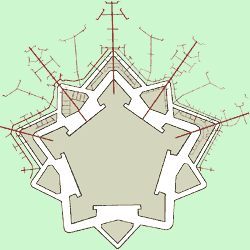

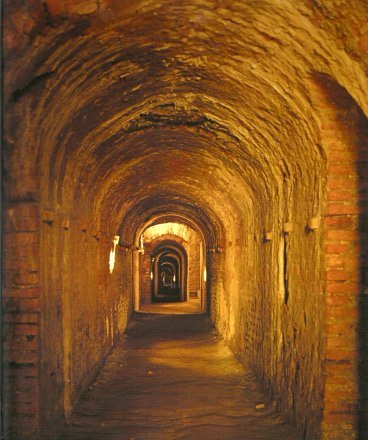
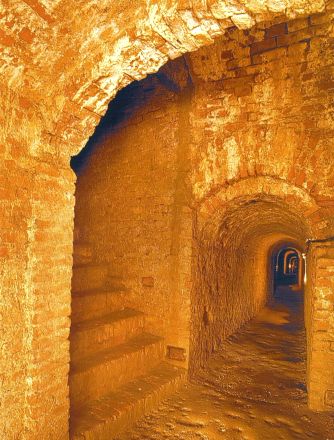
Let’s leave behind the low “capitale” tunnel and climb up the staircase which leads to the high “capitale” tunnel above.
We have reached by now the “magistrale” tunnel which, following a winding pattern, connects the “capitali” tunnels altogether.
We are now in the spot where the high “capitale” tunnel crosses the “magistrale” tunnel. After the crossing the tunnel goes on for about 300 metres at 7 metres of depth
Following the great tunnel we have got to the spot where it gets narrower. On the left a staircase which allowed to reach from the moat the inside of the citadel. Here the tunnel continues straight on at about 14 metres of depth
We are now at the last stage of our tour: a small tunnel ending in a mine chamber. Tunnels like this one were the main reason for existence of the whole network. In fact, as soon as the mine chamber was loaded, they could be easily clogged so that the mine would explode upwards
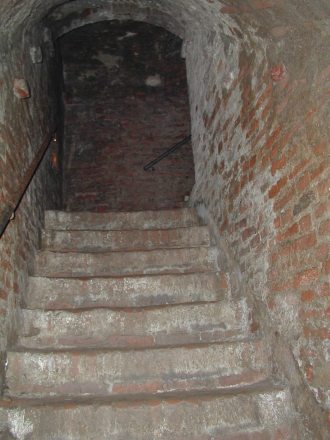
From this spot (corresponding to one of the intrances of the tunnels) we enter the so-called “great tunnel” wich narrows into the low “capitale” tunnel of “soccorso” bastion
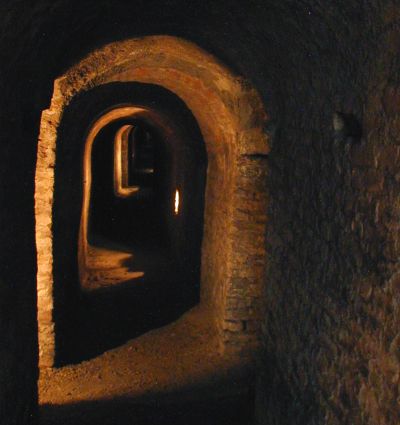
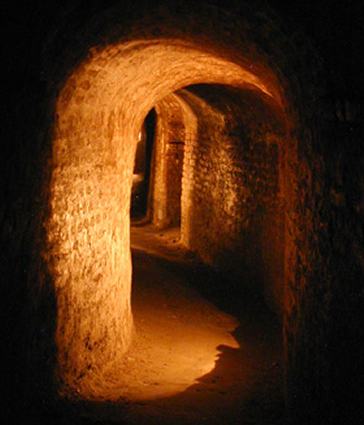
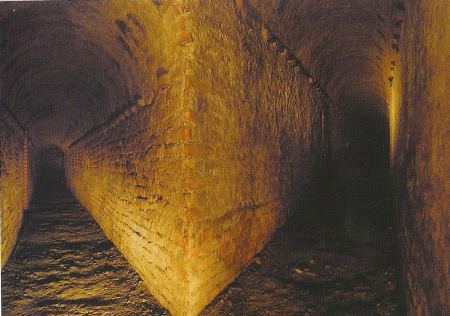
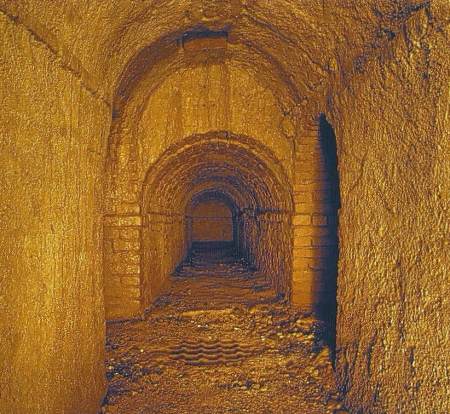
Stemming from basic network ( “capitali” and “magistrale” tunnel), an additional network of tunnels was allowing the defenders the control of the area surrounding the fortress.